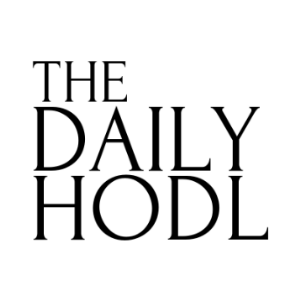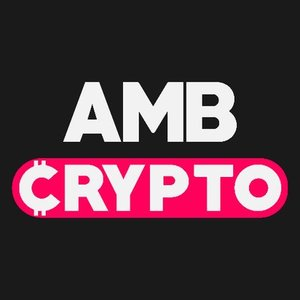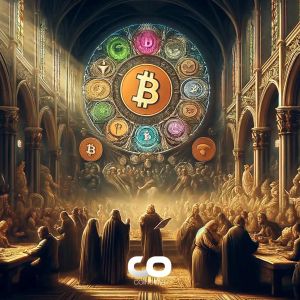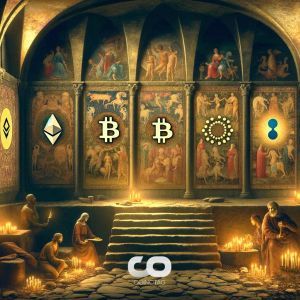Summary I am extremely bearish on the Grayscale Solana Trust (GSOL) and expect it to trade significantly lower than current levels in twelve months. GSOL has an opportunity cost problem due to its 2.5% management fee and the potential for positive real yields through staking SOL on chain. GSOL's premium to NAV is off the rails, with shares commanding an 810% premium to the underlying Solana in the fund. A nearly identical fund trades at a 113% premium. I've been writing for Seeking Alpha since 2019. Believe it or not, this is my 300th article for the site. Of all of the articles I have written, I don't know that I have ever had as much confidence in a call as I do in this one. I'm extremely bearish the Grayscale Solana Trust ( GSOL ) and I expect it trade significantly lower than current levels twelve months from now. Fund Objective GSOL is a very simple product to understand. The fund is one of Grayscale's many single-asset, crypto-exposed closed end funds. This particular fund is designed for the sole purpose of offering investors exposure to the native asset of the Solana ( SOL-USD ) blockchain, SOL. That's it. There is no other asset or business underlying GSOL but SOL. Thus, the valuation of the GSOL shares relative to the SOL that each share represents is arguably the most important factor in determining if GSOL shares are a buy or a sell. More on this in a moment. GSOL's Opportunity Cost Problem As a simple tool to get exposure to Solana, GSOL works in theory. That said, there are several factors that make the fund a dubious buy for long term investment, in my view. The most obvious issue is the 2.5% management fee. The Solana underlying the GSOL shares are not traded or leveraged in any way, the SOL sits in custody. In my view, 2.5% off the top for exposure to an asset that isn't really being managed in a meaningful way is a steep price to pay. Then there's the less obvious problem with unmanaged crypto assets: 90 Day Solana Rates (StakingRewards) Solana is a proof-of-stake blockchain. Unlike other Grayscale funds that track proof of work coins where miners handle transaction validation, proof-of-stake coins can provide the token holders themselves yield. Unlike Ethereum ( ETH-USD ) which has become deflationary, Solana has notoriously had a high rate of inflation through new token issuance. Staking allows holders to receive that issuance in an attempt to maintain purchasing power in the asset if the coin price declines with inflation. Recently, the "real yield" on staking flipped to positive unadjusted for coin prices - which have moved much higher over the last 12 months anyway. The broader point is, paying 2.5% on stationary SOL when staked SOL has a 7.4% reward rate is an opportunity cost of nearly 10% annually. By itself, this makes GSOL almost un-investable for long term holders. But the bigger issue today is the premium to NAV. NAV Rates and GSOL's Premium Since the fund's only asset under management is SOL, it's very easy to track the real time NAV rate, or the price to the fund's net asset value. At a negative NAV rate, shares are theoretically cheap. At a positive NAV rate, shares are trading at a premium to the underlying value. Unlike the ETF wrapper, shareholders can not redeem shares of closed end funds like GSOL. This is what led to massive discounts to net asset value in many of Grayscale's funds throughout much of 2022 and 2023. With ETFs, if the discount becomes significant, arbitragers can buy shares and redeem for the underlying to pocket the spread. To put it bluntly, GSOL's premium is completely off the rails: GSOL Premium Rate to NAV (Grayscale) At market close March 7th, 2024, GSOL shares commanded a monstrous 810% premium to the underlying Solana in the fund: GSOL OSOL SOL Per Share 0.37764114 0.480471 SOL Price $146.83 $146.79 GSOL Value $55.45 $70.53 GSOL Price $505.00 $149.99 Premium 810.7% 112.7% Sources: Grayscale, Osprey And it isn't just the value of the SOL underlying GSOL that makes GSOL expensive, it's also the premium comparison to a nearly identical product offered by a different asset manager. The Osprey Solana Trust ( OSOL ) closed March 7th at only a 113% premium to NAV. So if you're looking to ride the FOMO cycle higher yet still have even a slight motivation to find a "bargain," OSOL may be the better option. That said, both of these funds are currently available for private placement, so I can't even recommend OSOL as a legitimate alternative to GSOL. GSOL Shares Outstanding March 7th 892,227 January 31st 633,627 Change +40.81% In fact, GSOL shares outstanding have already moved higher very quickly. Just since the end of January, shares outstanding have increased by over 40%. When these shares come out of lockup, the accredited investors who have made the private placements will be able to sell the shares on the secondary market. In this case, it is the discount arbitrage in reverse. Since the private placements are done at NAV, if GSOL is still trading at the enormous premium levels that we're seeing currently, those new private placement shares can be sold at the premium on secondary when they come out of lockup - allowing holders with patience to pocket the massive spread. The Risk In Private Placements I would also caution accredited investors who may be reading this and considering the private placement strategy. These discounts/premium arbitrages are highly risky and the market can turn against the arb traders before lockup windows expire. Take for instance the story of Three Arrows Capital (aka 3AC). Among other things, that company borrowed heavily to put on the GBTC premium arbitrage in significant size. The duration risk from lockup blew up the trade as GBTC fell from a premium to a discount before Three Arrows could get out. Admittedly, 3AC's demise may be more of a story about leverage than anything else. But as I laid out in an earlier section, GSOL is a poor product fundamentally speaking because of the opportunity cost and shareholders' inability to redeem the shares if they're trading at a discount. There is nothing stopping GSOL from trading at a discount like so many of Grayscale's other funds did during crypto winter. Summary GSOL is a disaster waiting to happen. If there weren't other ways to get exposure to Solana, I'd understand longing the shares in an account like a Roth IRA. But there are too many other options for Solana investment to justify buying GSOL as a long term hold - especially at a 800% premium. You could certainly try to trade this thing if you want. But keep in mind the risks with trading highly volatile, illiquid tickers over the counter. And if you believe the underlying asset will catch up to the premium, you're far better off just buying SOL directly through an exchange or crypto IRA. From the other side, you could admittedly talk me into a private placement. But even there you still have duration risk as the NAV rate could collapse before lockup expires and then you're paying Grayscale 2.5% to not stake your coins. If I haven't made it clear enough by now, I would just stay away from this thing.
















